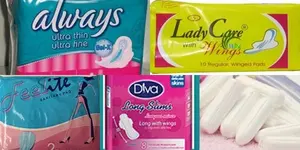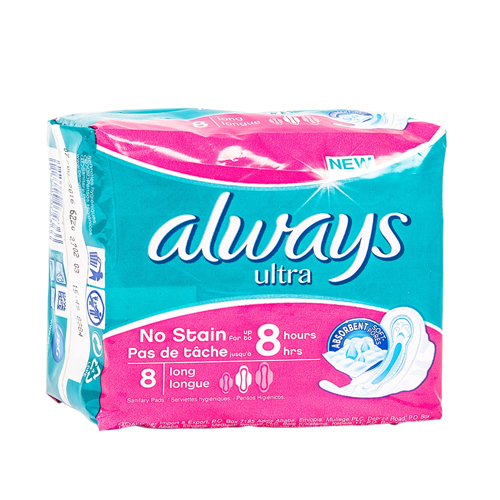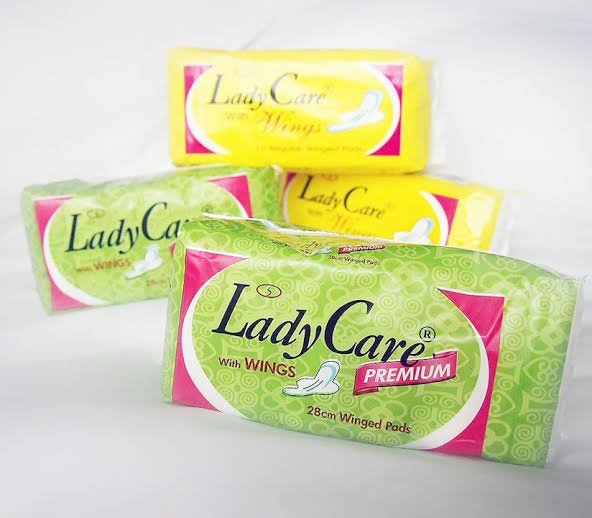The Evolution of Sanitary Pads: Empowering Women's Health and Hygiene
Sanitary pads, also known as sanitary napkins, are absorbent, disposable pads worn by women during menstruation to manage menstrual flow. These pads typically consist of layers designed for optimal absorption and comfort. The top layer is soft and non-woven to keep the skin dry and prevent irritation, while the absorbent core swiftly traps menstrual fluid. Over time, the evolution of sanitary pads has focused on enhancing technology, materials, and sustainability, offering various options, including organic and biodegradable pads. They play a vital role in empowering women's health, providing comfort and convenience during menstruation.
Composition and Technology of Sanitary Pads.

Sanitary pads have been a pivotal invention in the realm of women's health and hygiene, transforming the lives of millions of women around the world. A significant innovation, these humble yet revolutionary products have provided comfort, convenience, and enhanced hygiene during menstruation. The evolution of sanitary pads has been a testament to the continuous advancements in technology, materials, and understanding of women's needs. This article will delve into the history, composition, environmental impact, and the socio-economic implications of sanitary pads, shedding light on their significance in empowering women's health and overall well-being.
The Origin and Evolution
The history of menstrual hygiene products traces back centuries, with women utilizing various materials like cloth, wool, or even grass to manage their menstrual flow. It wasn't until the late 19th century that the concept of a disposable sanitary pad began to take shape. The earliest commercial disposable pads were made from wood pulp bandages during World War I, but they were far from the comfortable and absorbent pads available today.
The evolution of sanitary pads progressed significantly, especially in the latter half of the 20th century. Modern pads are typically made of layers of cellulose, super absorbent polymers, and a waterproof backing. The design advancements have prioritized comfort, absorbency, and breathability, enabling women to engage in daily activities without worry or discomfort during their menstrual cycles.
Types of Sanitary Pad
Sanitary pads come in various types, each designed to cater to different flow volumes, preferences, and needs of women. Here are some common types of sanitary pads available in the market:
- Regular/Standard Pads: These are the most commonly used pads, suitable for light to moderate flow. They offer a balance between absorbency and comfort and come in various lengths and thicknesses.
- Ultra-Thin Pads: Designed to be thinner and more discreet, these pads provide adequate absorbency for light to moderate flow. They are preferred for their slim profile, making them less noticeable under clothing.
- Maxi Pads: Maxi pads are longer and thicker, providing extra coverage and absorbency, making them suitable for heavier flow or overnight use. They often have wings for added protection against leaks.
- Overnight Pads: Specifically designed for overnight use or heavy flow, these pads are longer, wider, and more absorbent. They offer extended protection to prevent leaks during the night.
- Panty Liners: These are ultra-thin pads, much smaller and narrower than regular pads. Panty liners are used for very light discharge, spotting between periods, or as a backup for menstrual cups or tampons.
- Scented Pads: Some pads come with a fragrance to mask odors. However, scented pads might cause irritation or allergic reactions in some individuals, so it's essential to be cautious when using scented products.
- Organic/Biodegradable Pads: These pads are made from organic materials, such as organic cotton or bamboo fibers, and are free from synthetic chemicals. They aim to reduce the environmental impact and cater to users concerned about sustainability and allergic reactions.
- Reusable Cloth Pads: Cloth pads are washable, reusable alternatives to disposable pads. They are eco-friendly and cost-effective in the long run but require proper cleaning and maintenance.

Sanitary Pad Brands
There are numerous brands worldwide that manufacture and market sanitary pads, offering a wide array of options to cater to the diverse needs of women. Some of the well-known and widely used sanitary pad brands across different regions include:
- Always: A global brand known for its wide range of pads, including Ultra Thin, Maxi, Overnight, and Infinity FlexFoam pads. Always is recognized for its absorbency and leak protection features.
- Stayfree: Offering a variety of pads, including Ultra Thin, Maxi, and Overnight pads, Stayfree is popular for its odor control and softness, ensuring comfort during periods.
- Kotex: U by Kotex provides a line of pads designed for different flow volumes and preferences, focusing on comfort and flexibility. They offer thin, soft, and highly absorbent pads.
- Whisper: This brand, known as Always in some regions, provides a range of pads designed for different flow types, including overnight pads for maximum protection.
- Libra: A brand offering a variety of pads and liners known for their comfort, flexibility, and absorbency, catering to different flow levels.
- Carefree: Known for its panty liners and thin, flexible pads, Carefree focuses on discretion and comfort, particularly for lighter flows and everyday freshness.
- Laurier: A brand offering pads specifically designed for various flow levels, including heavy flow and overnight protection, focusing on comfort and reliability.
- Natracare: Specializing in organic and environmentally friendly products, Natracare offers pads made from organic and natural materials, ensuring minimal environmental impact.
- Seventh Generation: Another brand focusing on sustainability, offering chlorine-free and fragrance-free pads made from organic cotton and eco-friendly materials.
- L. Organic: Known for its organic cotton pads and commitment to women's health and social responsibility, L. Organic provides chemical-free and sustainable options.
Composition and Technology
Sanitary pads today consist of multiple layers carefully designed to provide optimal absorbency, comfort, and protection. The top layer is often made of a soft, non-woven material that ensures dryness and prevents skin irritation. Beneath this layer lies the absorbent core, typically composed of wood pulp, cellulose, and super absorbent polymers that quickly trap and retain menstrual fluid.
In recent years, manufacturers have also focused on reducing the environmental impact of pads by incorporating organic and biodegradable materials, catering to eco-conscious consumers. Some pads are now made with organic cotton, bamboo fibers, or other sustainable materials, offering both functionality and environmental responsibility.
Furthermore, advancements in technology have led to the production of thinner, more discreet pads without compromising on absorbency. Winged designs and innovative adhesive materials provide a better fit and security, allowing for a more active lifestyle during menstruation.

Benefits of Sanitary Pad
Sanitary pads offer several benefits to women during their menstrual cycles:
- Absorbency: Sanitary pads are designed to effectively absorb menstrual flow, keeping the user dry and comfortable. Advanced materials and technology ensure high absorbency, allowing women to carry on with their daily activities without concern.
- Convenience: They are disposable and easy to use, providing a hassle-free option for managing menstrual flow. Pads are available in various sizes and absorbencies to cater to individual needs, offering convenience and comfort.
- Comfort and Protection: The soft, non-woven top layer of sanitary pads helps prevent skin irritation and ensures a comfortable experience. Additionally, the pads are often designed with wings and an adhesive backing for a secure fit, offering protection against leaks and stains.
- Hygiene: Sanitary pads promote menstrual hygiene by effectively containing menstrual fluid and preventing it from coming into contact with clothing. This helps in reducing the risk of infections and ensures cleanliness during menstruation.
- Variety and Accessibility: There is a wide range of options available in terms of size, thickness, and materials, catering to individual preferences. Moreover, they are widely accessible in stores, pharmacies, and online, ensuring easy availability for women.
- Discreetness: Modern sanitary pads are designed to be thin and discreet, providing women with the freedom to move and participate in various activities without feeling self-conscious about their menstrual cycle.
- Empowerment and Dignity: By offering a reliable solution for managing menstrual flow, sanitary pads empower women, allowing them to participate fully in daily life without discomfort or disruption. They contribute to a sense of dignity and confidence during menstruation.
- Environmental Considerations: Some varieties of sanitary pads are now made from organic or biodegradable materials, addressing environmental concerns and offering eco-friendly options for users concerned about sustainability.
Environmental Impact and Sustainability
The increased use of disposable sanitary pads has raised concerns about their environmental impact. The majority of traditional pads contain plastics, and their disposal contributes significantly to non-biodegradable waste. This has led to a shift in consumer preferences towards eco-friendly and biodegradable options that reduce the environmental footprint.
Several companies have introduced biodegradable and compostable pads, aiming to reduce the accumulation of non-recyclable waste. Some have also initiated recycling programs or explored alternative materials to create pads that break down more easily in landfills, thereby lessening their environmental impact.
The environmental impact of traditional sanitary pads and the push for sustainability have become crucial topics due to concerns about waste, plastic usage, and the carbon footprint associated with menstrual products. Here are some aspects of the environmental impact and efforts towards sustainability in sanitary pads:
- Non-Biodegradable Waste: Most traditional sanitary pads contain a significant amount of non-biodegradable materials, primarily plastics like polyethylene and polypropylene, which pose a challenge for decomposition. Improper disposal of these pads leads to environmental pollution, contributing to the accumulation of non-recyclable waste in landfills.
- Carbon Footprint: The production of conventional pads involves the use of non-renewable resources and energy, contributing to the carbon footprint. The extraction of raw materials, manufacturing processes, packaging, and transportation add to the environmental impact.
- Sustainability Efforts: In response to these concerns, there has been a growing movement towards more sustainable menstrual products. Some brands have introduced eco-friendly alternatives, such as biodegradable pads made from organic and natural materials like organic cotton, bamboo fibers, or other plant-based materials. These pads aim to reduce the environmental impact, promoting biodegradability and minimizing waste accumulation.
- Reusable Options: Another sustainable approach involves reusable cloth pads. These washable and reusable pads are made from fabric and can be laundered after use. While they require more maintenance, they significantly reduce waste and can be a cost-effective, environmentally friendly option in the long run.
- Recycling Programs: Some companies have initiated recycling programs for menstrual products, aiming to reduce waste by collecting used pads and diverting them from landfills. These programs explore methods to safely dispose of and repurpose used pads, focusing on recycling or upcycling elements of the pads.
- Awareness and Education: Increasing awareness about the environmental impact of menstrual products and advocating for sustainable choices among consumers has been pivotal. Education on proper disposal methods and the availability of eco-friendly options is essential for encouraging a shift towards more sustainable practices.

Uses of Sanitary Pad
The primary use of sanitary pads is to effectively manage menstrual flow during a woman's menstrual cycle. However, their uses extend beyond this fundamental purpose, encompassing various applications and benefits:
- Menstrual Management: The core use of sanitary pads is to absorb menstrual blood during menstruation. They provide a hygienic and convenient way for women to manage their menstrual flow, offering comfort and protection against leaks.
- Postpartum Bleeding: After childbirth, women often use sanitary pads to manage postpartum bleeding. These pads, particularly those designed for heavy flow, offer absorbency and comfort during the post-delivery recovery period.
- Bladder Control and Incontinence: Some women, particularly those experiencing mild urinary incontinence, use sanitary pads as a temporary solution to manage light leaks or dribbles. They offer a discreet and convenient option for these instances.
- Absorbent for Other Purposes: In situations where there might be a need for an absorbent material, sanitary pads can be repurposed for various uses. For instance, in emergencies or first aid, they can serve as a temporary absorbent bandage or dressing.
- Travel and Convenience: Sanitary pads are often carried by individuals for unexpected situations, such as sudden menstrual onset or as a backup in case of unavailability of other hygiene products. Their compact size and convenience make them a useful travel companion.
- Hygiene and Wound Care: In some cases, particularly in resource-limited settings, sanitary pads have been used as a makeshift wound dressing due to their absorbent properties. Though not the primary use, their absorbency can help manage minor wounds in emergencies.
Socio-Economic Implications
Access to menstrual hygiene products, including sanitary pads, is a critical socio-economic issue affecting many women worldwide. In various regions, affordability and accessibility remain a significant challenge. The lack of access to proper menstrual hygiene products can lead to health issues, absenteeism from school or work, and perpetuate social stigmas surrounding menstruation.
Non-profit organizations and governmental initiatives have been working towards providing free or subsidized sanitary products to marginalized communities, aiming to improve women's health, education, and overall quality of life. Initiatives like these are instrumental in breaking the barriers that hinder women from managing their menstrual health effectively.
Frequently Asked Questions (FAQ)
What is in a sanitary pad?
What is the difference between sanitary pads and pads?
Is it necessary to wash sanitary pads after use?
What are menstrual pads used for?
What is in a sanitary pad?
Sanitary pads usually consist of several layers designed to provide absorbency, comfort, and protection. The key components typically include a soft, non-woven top layer that keeps the skin dry and prevents irritation, an absorbent core made of materials like wood pulp, cellulose, and super absorbent polymers to trap menstrual fluid, and a waterproof backing to prevent leaks. Some may also have adhesive wings for better fitting and leak protection.
What is the difference between sanitary pads and pads?
The terms "sanitary pads" and "pads" are often used interchangeably, referring to the same product designed for menstrual flow management. "Sanitary pads" is a more formal or specific term, denoting pads used for maintaining menstrual hygiene. However, "pads" might be a more general term and could refer to a broader range of absorbent items, such as incontinence pads, nursing pads, or even foot or underarm sweat pads. In the context of menstrual hygiene, both terms usually refer to the same product.

Is it necessary to wash sanitary pads after use?
For most disposable sanitary pads, there is no need to wash them as they are designed for single-use and are meant to be disposed of after use. However, in the case of reusable cloth pads, it is necessary to wash them after use to maintain hygiene. Reusable cloth pads can be washed, either by hand or in a washing machine, using gentle detergents, and then dried thoroughly before their next use. Proper cleaning and maintenance are crucial to ensure the pads are ready for reuse.
What are menstrual pads used for?
Menstrual pads, also known as sanitary pads, are primarily used by women during their menstrual cycles to absorb and manage menstrual flow. They are worn in the underwear and serve to absorb menstrual blood, keeping the user dry, comfortable, and protected from leaks. These pads are designed to maintain menstrual hygiene, ensuring cleanliness and comfort during menstruation. They are available in various types and sizes to accommodate different flow volumes and preferences.
Functions of Sanitary Pads
Sanitary pads serve several crucial functions that are essential for managing menstruation:
- Absorption of Menstrual Flow: The primary function of sanitary pads is to absorb menstrual blood during a woman's menstrual cycle. They are designed with layers of absorbent materials that pull in and retain the menstrual flow, keeping the user dry and preventing leaks.
- Protection and Leakage Prevention: Sanitary pads are engineered to provide protection against leaks. Many pads have wings and an adhesive backing that secures them to undergarments, preventing movement and ensuring the pad stays in place, reducing the risk of leaks and stains.
- Comfort and Skin Protection: The top layer of sanitary pads is made from soft, non-irritating materials to ensure comfort. It protects the skin from dampness and irritation, maintaining a dry and comfortable environment during menstruation.
- Maintaining Hygiene: Sanitary pads help maintain menstrual hygiene by containing menstrual fluid within the pad, preventing it from coming into direct contact with clothing or the skin. This function is crucial in reducing the risk of infections and ensuring cleanliness.
- Variety in Design and Absorbency: They come in various sizes, thicknesses, and absorbencies to accommodate different flow volumes and preferences. This variety allows users to select the most suitable pad for their individual needs.
- Discreetness and Convenience: Modern sanitary pads are designed to be discreet and easy to use. Their thinness and packaging make them convenient to carry and change, allowing women to manage their menstrual flow without feeling self-conscious or inconvenienced.
- Empowerment and Dignity: By providing a reliable and comfortable method of managing menstruation, sanitary pads empower women to engage in their daily activities with confidence and dignity. This function is especially important in ensuring that menstruation does not hinder a woman's participation in regular life.
/yaootaweb-production-ng/media/crawledproductimages/b78355169282efb50cac6a1712edf72407fa9d1a.jpg)
The evolution of sanitary pads stands as a testament to human innovation and the commitment to improving women's health and hygiene. From humble beginnings to sophisticated designs, these products have significantly impacted the lives of women globally, enabling them to manage menstruation with ease and dignity.
Continued advancements in materials, sustainability efforts, and initiatives to improve access to menstrual hygiene products are crucial in addressing the socio-economic disparities and environmental concerns associated with these products. Empowering women with the means to manage their menstrual health not only enhances their well-being but also contributes to a more inclusive and equitable society.
Sanitary pads have come a long way, and while there's ongoing progress and challenges, they remain a fundamental cornerstone in the journey towards ensuring women's health and dignity worldwide.



